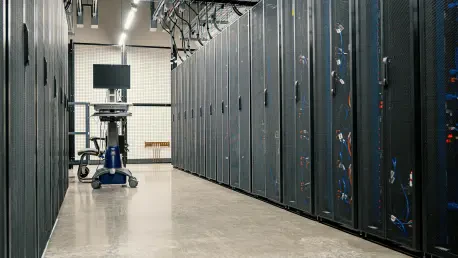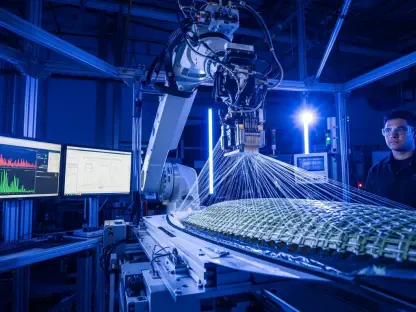In the rapidly advancing realm of artificial intelligence, the specialized data centers supporting AI’s evolution are indispensable to the technology’s transformative influence across various sectors. These facilities, like OpenAI’s expansive “Stargate,” are constructed to handle the intensive power requirements and sophisticated algorithms driving AI innovations and are becoming essential components in both enterprise and national infrastructures. However, with these developments comes a heightened threat landscape that merges physical and cyber challenges, compounded by the ever-growing regulatory frameworks shaping data privacy and security in AI applications. The fusion of these threats necessitates a robust security strategy for AI data centers, addressing the complexity and rapid evolution of these technologies.
Integrated Security Strategies
AI data centers represent mission-critical infrastructure requiring a multifaceted security approach encompassing both the digital and physical realms. Traditional distinctions between cyber and physical threats have all but disappeared, urging organizations to adopt a cohesive, integrated defense strategy. The convergence of these threats is particularly evident as attack surfaces expand. Cyber-physical threats manifest through sophisticated intrusions that target both digital systems and physical equipment. Due to their high-value components, such as GPUs, AI data centers are prime targets for theft and illicit activities, posing risks to operations and data integrity.
To mitigate physical security risks, robust measures like enhanced access controls, biometric systems, and multi-factor authentication (MFA) are essential. These defenses help secure entry points and internal areas, guarding against both external threats and potential insider attacks. As threats evolve, continuous evaluation and updates to these systems are vital, maintaining high standards of security. Moreover, sophisticated surveillance technologies—utilizing drones and advanced sensors—are employed for surveillance and intrusion detection. Proactively strengthening these measures is paramount to protect vital infrastructure from diverse risks.
Addressing Supply Chain and Environment Risks
Supply chain vulnerabilities also pose significant risks to AI data centers. Compromised hardware at any stage can introduce threats before devices even reach their operational environment. Establishing stringent standards for hardware procurement and verification is essential to minimize these risks, ensuring that all equipment is secure and meets necessary security benchmarks. Rigorous decommissioning procedures are equally crucial to prevent data breaches through improperly disposed assets, thereby safeguarding sensitive customer and enterprise data.
In addition to securing physical assets, AI data centers face environmental risks linked to their complex power and cooling requirements. Advanced cooling solutions, such as liquid-cooling systems, are often employed to handle the high-density and high-performance nature of AI hardware, ensuring efficient operation without overheating. Redundancy in power systems, such as uninterrupted power supplies (UPS) and backup generators, is critical to maintain continuous operation. These elements contribute to environmental security, limiting vulnerabilities and operational disruptions that could undermine data center performance, ultimately influencing data service reliability for enterprises.
Navigating Regulatory and Geopolitical Pressures
The regulatory landscape further complicates security strategy implementation in AI data centers. Contemporary data privacy laws, like the General Data Protection Regulation (GDPR) and the California Consumer Privacy Act (CCPA), impose stringent expectations on data management, encompassing AI systems’ vast datasets. Moreover, emerging regulations, such as the EU AI Act, will soon introduce new compliance mandates related to AI security, fairness, and transparency. Meeting these regulations requires a comprehensive understanding of both local and international legal requirements, ensuring best practices are followed in data handling and security protocols. This creates an added layer of complexity as organizations must continuously update their policies and technologies to remain compliant with evolving legislation.
Geopolitical complexities further intensify challenges for AI data centers, particularly as they become national infrastructure focal points. Large-scale installations like the “Stargate” transform these centers into critical targets for both nation-state actors and sophisticated cybercriminals seeking to infiltrate or disrupt operations. Anticipating these threats through foundational and anticipatory security strategies—developed in collaboration with experienced security professionals—ensures data center resilience against potential geopolitical hostilities. Effective collaboration between physical security experts, cybersecurity teams, and facility operations staff is necessary to establish a seamless threat detection and response protocol, maintaining the integrity of both infrastructure and data.
Conclusion: Preparing for an Uncertain Future
AI data centers are critical infrastructure needing a comprehensive security strategy that covers both digital and physical dimensions. The line between cyber and physical threats has blurred, pushing businesses to embrace a unified defense approach. This merging of threats is increasingly noticeable as attack surfaces grow. Cyber-physical threats involve advanced intrusions targeting digital systems and physical devices. Given their valuable components, including GPUs, AI data centers are prime targets for theft and unlawful acts, jeopardizing operations and data reliability.
To counteract physical security risks, strong measures like improved access control, biometric methods, and multi-factor authentication (MFA) are crucial. These strategies defend entry points and restricted zones against external and internal threats. As threats change, it’s necessary to continually evaluate and refresh these systems to uphold security standards. Advanced surveillance tools—using drones and sophisticated sensors—are used to monitor and detect intrusions. Bolstering these measures is vital to shield essential infrastructure from diverse hazards.









